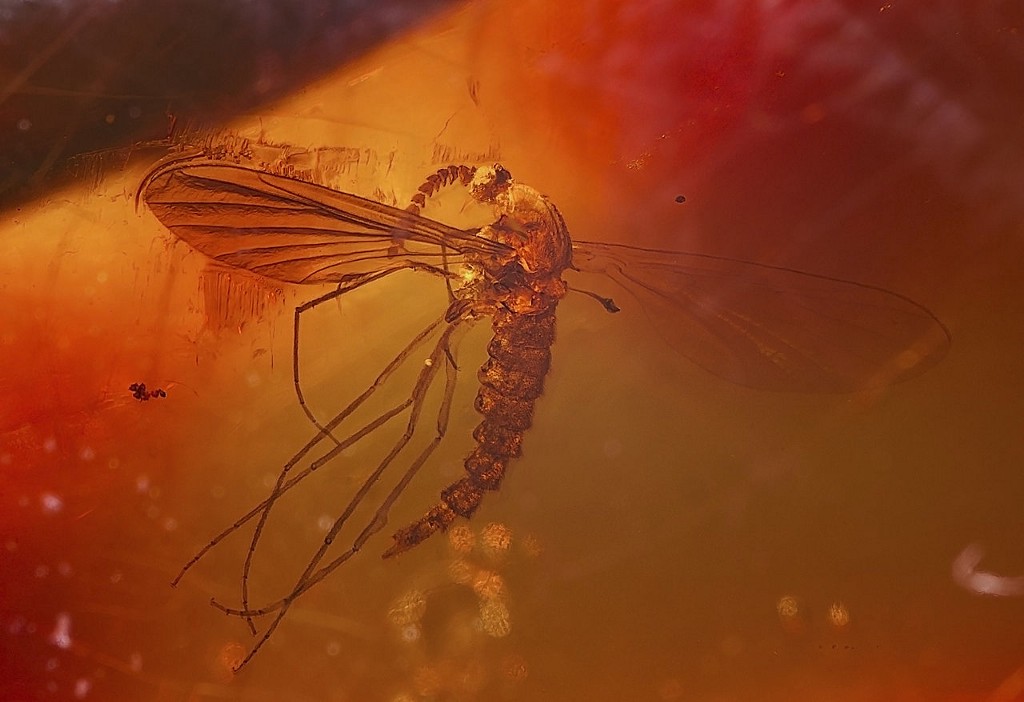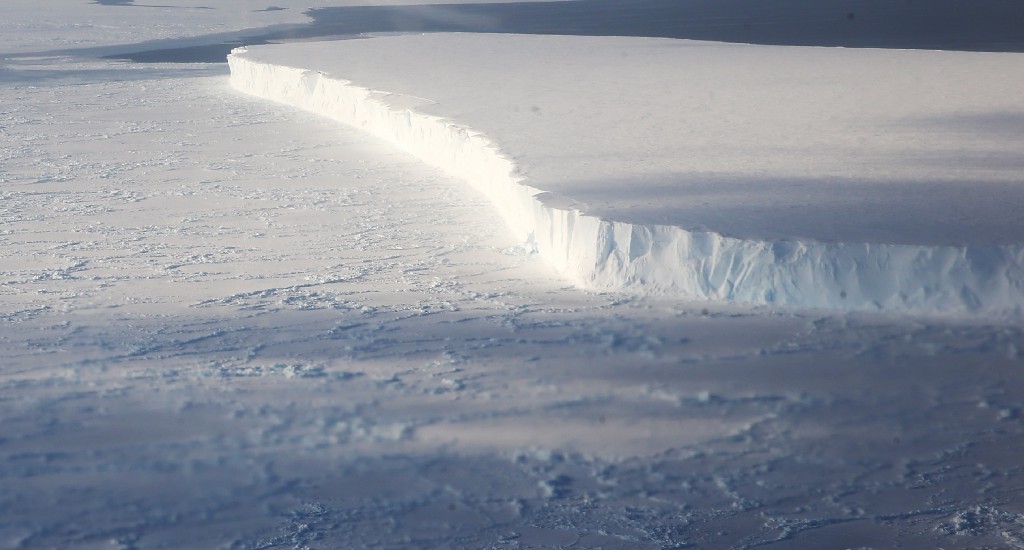Could Prehistoric Bugs Thaw And Kill Us All?

‘Jurassic Park’s’ mosquito DNA may pose real-life dangers.
Our Movie Mythbusters series answers the age-old question, “Okay, but could that actually happen in real life?”
You know that mosquito trapped in amber in “Jurassic Park”? The one whose blood contained the dinosaur DNA that the extremely shortsighted biotech firm InGen used to the giant lizards? Was that a real thing?
Proper sci-fi geek that I am, I looked it up. Turns out scientists actually have discovered ancient parasitical insects, but unlike in “Jurassic Park,” the insect bodies don’t contain intact dinosaur DNA. They sometimes do contain fossils of smaller parasites—microbes, bacteria and viruses — that may have infected dinosaurs. Single-celled malaria-causing parasites, for example.
Um…could those come back to life?

The answer is no. When any life-form is trapped in amber (petrified tree sap) it dies. So those malaria parasites are fossilized, and can’t come back. Phew! I thought — until I started reading about the single-celled organisms we’ve found frozen in ice.
The bacteria lay suspended in Alaskan ice for up to 32,000 years. Scientists discovered it in 2005, right near a frozen woolly mammoth. The bacterium was unknown to science. When researchers thawed it out, it began swimming on the microscope slide. Dubbed Carnobacterium pleistocenium, it made meat spoil, but no research suggested it caused disease.
Two years later, scientists probed the world’s oldest ice, in the valleys of Antarctica. They found bacteria that had been in suspended animation for 100,000 to 8 million years. Naturally, they tried to bring that back to life, too.
“The young stuff grew really fast,” Rutgers marine biologist Kay Bidle says of the 100,000-year-old bacteria. The 8 million-year-old stuff doubled every 70 days. Bidle says don’t worry—they’re harmless, too.
Bacteria aren’t the only microbes hiding in polar ice. Viruses are, too, and biologist Tom Starmer of Syracuse University was the first to find them, in Greenland in 1999. He found 15 strains of tomato mosaic tobamovirus, a common plant virus. The strains were 500 to 140,000 years old, and when they thawed, they were alive again. Starmer says yes, they were probably still infectious.
Climate change is melting polar ice, and that means these microbes are seeping into the sea. Bidle and his team from Rutgers say we shouldn’t worry about that, because marine bacteria and viruses aren’t typically as harmful to human life as the ones that exist on land. No problem, then. (But, um…could they be bad for fish?)

Then, just three years ago, Jean-Michel Claverie of the University of Aix-Marseille in France found a virus at least 30,000 years old, deep in the Siberian permafrost. When he and his team of researchers thawed it, it, too, became infectious again. The virus, Pithovirus sibericum, attacks amoebas but isn’t a threat to humans or animals.
But Claverie’s worried about what else might be hiding in Siberia, because climate change has been melting the permafrost for the past 40 years, and we expect it to continue melting. As the melt opens up new routes through previously frozen seas, more and more companies are mining for gold and tungsten in the permafrost region.
“It is a recipe for disaster,” Claverie tells BBC. “Through mining and drilling, those old layers will be penetrated.” Viruses travel all over the world, in the air and water. Claverie says diseases like smallpox — one of the deadliest diseases ever, eradicated from Earth’s surface in 1980—may be hiding in the ice.
“By going deeper we may reactivate the possibility that smallpox could become again a disease of humans in modern times,” Claverie says.
And the threat of long-dormant viruses—smallpox, flu, polio—that may harm humans extends beyond Siberia. Polar ice may harbor such viruses, too, Syracuse University’s Starmer says. Virologist Alvin Smith of Oregon State University echoes that worry.
“If you’ve got these things lying in the ice for a thousand years or more and their usual host has not had to deal with them, this may be a source of epidemics,” he tells New Scientist. Smith has found evidence that other viruses, called caliciviruses, periodically emerge from the sea and cause new diarrhea infections.
Virologist Jonathan Ball of the University of Nottingham says he’s astounded the Siberian amoeba virus could still infect a host after laying dormant so long.
“But just how long other viruses could remain viable in permafrost is anyone’s guess,” Ball tells BBC. “It will depend a lot on the actual virus. I doubt they are all as robust as this one.”
Let’s hope he’s right, and we don’t go the way of the dinosaurs. (Would the sentient cockroaches open a “Human Park?”)
All in all, it’s a pretty good argument for doing something to arrest climate change.
